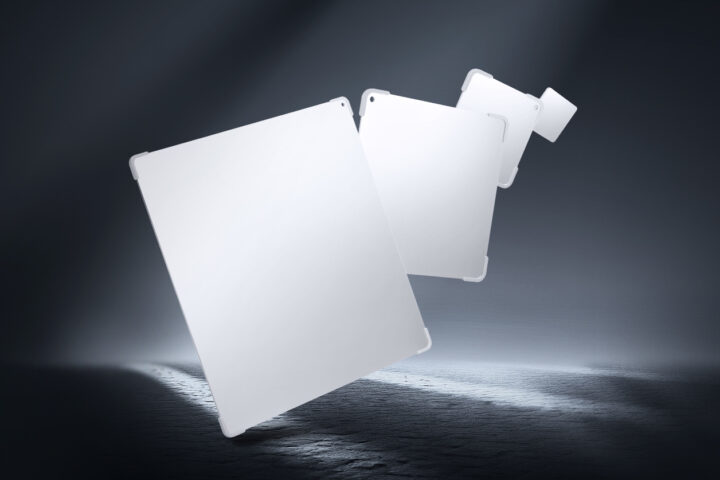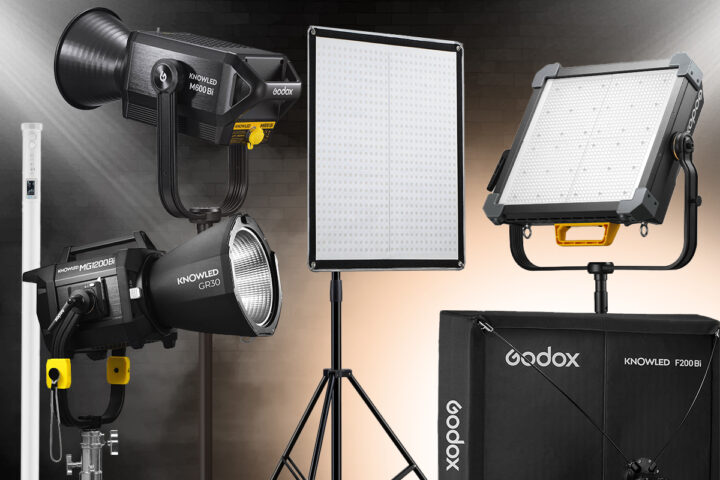Dental photography has become an essential part of any treatment process in modern dentistry, helping document clinical cases and maintain thorough medical records. However, to fully provide your patients with a top-quality service, it’s essential to bring professional flash lighting into your practice. Our short guide here aims to spotlight the most popular flash types in dental photography, making it easier for you to choose the right one for your needs.

Quick View
The Magic of Proper Lighting in Focus
While choosing the right camera and macro lens is a crucial aspect, proper lighting is yet another key factor in creating a successful image in dental photography. Whether you’re capturing a detailed intraoral picture or a portrait shot, the right amount of light can make a world of difference. To truly take control over your dental digital photography and get the best detail, texture, color and exposure on your subjects in different settings, you should understand the way light works. After all, the imperfections that might escape the patient’s notice in a mirror view, become conspicuous in a high-quality image.
Why Is Flash Lighting Necessary?
Why opt for flash lighting in dental photography? The straightforward answer lies in its distinct advantages over alternative solutions. This prime tool holds the key to unlocking precision and excellence in capturing your patients’ data. Let’s explore the specific reasons that make flash lighting indispensable for practitioners seeking optimal results in their photography endeavors.

All The Power You Need
Unlike continuous lights, which lack the necessary power, a flash steps in to provide the needed punch. Its ability to emit a strong burst of light, especially in close quarters, addresses a critical aspect: achieving precise exposure. A flash effectively illuminates the entire oral cavity, uncovering details that might otherwise remain hidden.
True-To-Life Color Rendition
Flash lighting excels in capturing hues faithfully, ensuring accurate color representation. This precision is clinically significant, aiding in the diagnosis and documentation of various dental conditions. Accurate color rendition is crucial for discerning subtle tissue changes, identifying anomalies, and monitoring patient progress.
Effortless Flash Precision
Modern dental photography embraces the convenience of TTL (Through-the-Lens) flash mode, transforming the workflow. This feature automatically selects the optimal flash power, seamlessly aligning with your camera settings. By dynamically adjusting flash output, TTL mode eliminates the need for test shots, saving valuable time and ensuring consistent, accurate exposure in every dental image.
Seamless, Compact & Convenient
When it comes to practicality, dental photography flashes are crafted for user-friendly setup and hassle-free handling. Designed to effortlessly mount onto the front of your camera’s lens, these flashes streamline the preparation process. Their compact design ensures they remain unobtrusive, facilitating a comfortable shooting experience for both the patient and practitioner.

Camera Settings & Exposure Parameters Explained
To ensure optimal exposure in clinical dental photography, having the right camera settings is paramount. Switching your camera to Manual mode will provide all the necessary control for precision. Now, let’s delve into the three fundamental camera settings crucial for capturing impeccable dental images:
- ISO – in the context of photography, it refers to the sensitivity of the camera’s image sensor to light. Given that dental photography requires a flash to supply ample light for your camera, consider setting it to a low value like ISO 100.
- Exposure time – this parameter determines how long your camera’s shutter stays open. A good rule of thumb for handheld photography using a flash is to set it to 1/200 s. This helps ensure your pictures are not blurry, preventing any slight handshakes from impacting the photo quality.
- Aperture – this setting not only controls the amount of light entering the lens and camera but also determines the depth of field in your image. The lower the aperture value, the shallower the depth of field. To capture every tiny detail of a client’s teeth and maintain a crisp focus within the entire mouth, a deep depth of field is essential. For extraoral photos, an aperture setting between f/8 to f/11 works well, while for intraoral photos, it’s best to use higher values, such as f/22 and up.

Choosing the Right Flash for Dental Photography
When it comes to lighting tools in dental photography, a macro flash stands out as the optimal choice. These can be further categorized into two distinct types: ring flash and twin flash. While typically attached to the front of your lens, some brands, such as Godox, introduce bracket-mounted solutions, providing added flexibility in flash head positioning. Both flash systems yield outstanding results for dental images, making the choice between them often a matter of personal preference. Let’s get a closer look at these two options.
Ring Flash – An Epitome of Simplicity
Renowned for their ease of use, ring flashes strike an excellent balance between affordability and performance. These handy tools provide ample illumination for detailed intraoral pictures or portrait shots. The key advantage of ring flashes lies in delivering uniform, shadowless illumination, ensuring optimal clarity in all dental images. However, they may face challenges in capturing surface texture and may produce a distracting circular catch light. Despite these considerations, a ring flash is the recommended choice for any novice dental photographer.


Twin Flash – Precision Through And Through
For unparalleled control in dental photography, consider the twin flash—a setup with two individually controlled flash heads positioned in front of the lens. Its notable advantage lies in the adjustable light direction, allowing dentists to obtain precise effects and enhance photo quality. This configuration facilitates precise control over shadows and highlights, essential for capturing tooth texture and topography in intraoral photography. While the twin flash offers superior lighting quality, it comes with a higher price tag and demands more skill, making it suitable for experienced photographers seeking top-tier control and image quality.


Perfecting Your Dental Photography: Essential Tips for Success
Elevating your dental photography skills goes beyond mastering camera settings; it involves a comprehensive approach to capture compelling and clinically valuable images. From understanding the fundamentals to incorporating effective editing and marketing strategies, each tip is tailored to enhance your ability to showcase your dental work with precision and professionalism.
- Get the best possible understanding of the fundamentals of photography: Familiarize yourself with exposure, depth of field, shutter speed, and aperture by practicing other types of photography.
- Practice with your friends, family, or staff: Before photographing your first patient, refine your skills by practicing with familiar faces.
- Obtain written consent for photos: Always prioritize obtaining written consent from your clients before capturing any images.
- Keep your patient in a neutral pose: Minimize tension in the neck or jaw area by ensuring a neutral pose during photography sessions.
- Dry the gums completely: To avoid excessive reflections, make sure the gums are thoroughly dried before capturing images.
- Practice minimally invasive editing: Focus on essential adjustments like exposure, contrast, and detail, aiming for the best possible image directly from your camera.
- Capture great before-and-after pictures: Showcase your services with impactful before-and-after images, highlighting the transformation in your patients’ smiles.
- Record short videos of finished treatments: Explore the potential of short videos for effective social media marketing, providing engaging content for your audience.

And Remember – Practice Makes Perfect!
Dental photography has its own learning curve and – just like any other procedure – requires a good deal of perseverance and patience to perfect. Understanding the theory behind flashes and camera settings is essential, but practice is what refines your dental photography expertise. Honing your skills regularly helps you understand how different settings affect the photographs and enable you to make necessary adjustments quickly.

Godox MF12-K2

Godox MF-R76



